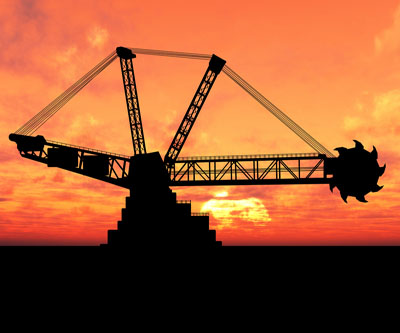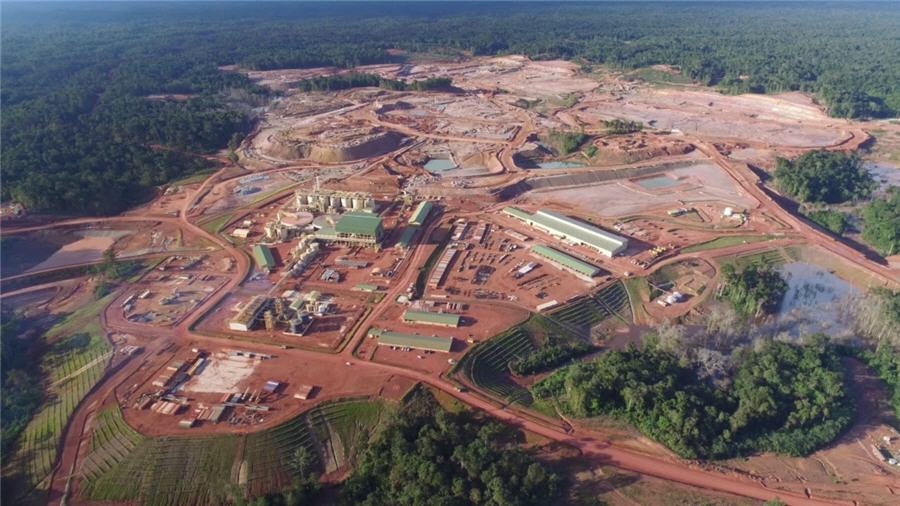BHP set for the mother of all digs as $30 billion Olympic Dam expansion is approved

Australia on Monday gave approval for BHP Billiton to expand its Olympic Dam mine but set more than 100 environmental conditions on the uranium, copper and gold project.
The $30 billion expansion of the existing Olympic Dam underground operation will create an adjacent open pit mine that would be the worlds biggest. An idea of the olympian effort required to construct the mine and the size of the undertaking is clear from the fact that trucks will haul overburden 24/7 for five to six years just to reach the ore body. The combined operations would mine 72 Mt ore per year and would produce 750,000 tonnes refined copper, 19,000 tonnes uranium oxide, 800,000 gold ounces and 2.9 Moz of silver per year.
Fin24 quotes Australia’s Federal Environment Minister Tony Burke: “While I have considered the economic and jobs benefits of this project, my focus has been on protecting matters of national environmental significance. The strict conditions I’ve imposed will help ensure protection of the natural environment, including native species, groundwater and vegetation, for the long-term.” Under the government’s conditions, BHP Billiton will be required to establish an offset area of about 140 000 hectares – eight times the amount of land forecast to be cleared for the project.
MINING.com reported in September that BHP is looking for a robotics exec to dig world’s biggest open pit because it wants to “future-proof” the Olympic Dam project, including using driverless haulage trucks and has put out a recruitment ad for an executive to oversee the high-tech initiative. The system would mean operators can be in a control room on the site or even in the comfort of a city office hundreds of kilometres away.
MINING.com reported in August on BHP’s record annual results after prices of copper, iron ore and coal reached all-time highs on demand from China. Profit at the world’s biggest miner surged 86% for the 12 months $23.6 billion, a full $1.4 billion ahead of already rosy expectations, on the back of earnings from iron ore, its biggest division, which jumped 122% to $13.3 billion. The record profits also meant that the Anglo-Australian firm still had $60 billion left for expansion after Petrohawk deal.
More News
{{ commodity.name }}
{{ post.title }}
{{ post.date }}

8 Comments
Sanchezkiko
WOW!!!!
Cornelius Barnard
Yes this is a WOW!! indeed, my name is cornelius and a safety proffesional, in the construction and mining inductry for 15 years, who would know where to get the info to be part of this amazing project if anyone knows pleas send a e-mail to cornelius_barnard@yahoo.com
Ronald
I am a fan of BHP ,With all that profit , I would like to see them buy some HITACHI EQUIPMENT ! and some P&H draglines !
Gary D Duval
with 30 years here in the usa,i a have been out of work for two years,how can i get a job running a stripping shovel.i am 47 have worked in rhode island in the aggregates business for 30 years and have absolutely nothing to show for it.my boys wanted to work with me and this is certainly not the state to do it in.the work ethics and people here are absolutely no good to work for.BHP if you r reading this please give us a shot at working for a real company.help.
Eyvan_Finne
Gary, Your country and you squandered your wealth. Now you pay the price and want us Aussies to tag and bag you! Don’t think so mate! We’ll keep our own employed and you can live in your shacks like you deserve…
Jan
With all their environmental conditions, one would have to be total recycling of water and non-hazardous waste. Thank goodness CLLEEN Water and Power have hit town – seems like the only show to actually be able to do this – and with the Carbon Tax thanks to Julia, they’ll love it even more – it’s battery powered thus self-powered. Go get ’em BHP. Just make sure you give some jobs to locals.
Hrrlive
Please do not recomend anyone from south of the 49th to move to Canada for work, they embrace entitlements and the Liberal Mentality, and now they are paying the price for it. The Klinton’s and Osama gang, one big soup pot.
Chris Grotkowski
Hi, I am a Canadian who is looking for new opportunites… I have worked in the oilsands driving a haul truck and would like to try a new adventure. Anyone have any ideas on how to contact someone in regards to this?